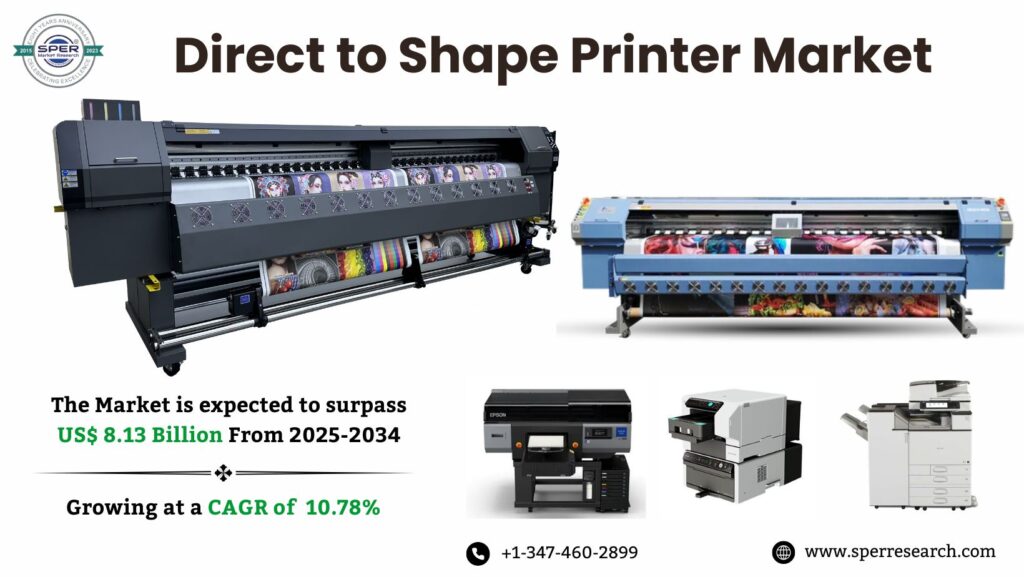A Direct-to-Shape (DTS) printer is an advanced digital printing technology designed to print directly onto three-dimensional objects without the need for labels or secondary substrates. Unlike traditional flatbed or label printing, DTS printers can print on a wide variety of shapes, sizes, and materials, including plastic, glass, metal, and ceramics. This technology utilizes specialized print heads and UV-curable inks to achieve high-resolution, durable, and vibrant prints on curved or irregular surfaces. DTS printing is widely used in packaging, promotional products, and custom manufacturing, offering enhanced design flexibility, reduced waste, and faster production turnaround while maintaining exceptional print quality.
According to SPER market research, ‘Global Direct to Shape Printer Market Size- By Technology, By End-Use, By Ink Type- Regional Outlook, Competitive Strategies and Segment Forecast to 2034’ state that the Global Direct to Shape Printer Market is predicted to reach USD 8.13 billion by 2034 with a CAGR of 10.78%.
Drivers:
The growth of the Direct-to-Shape (DTS) printer market is driven by rising demand for product personalization and customization across industries such as packaging, beverages, cosmetics, and promotional items. Brands are increasingly seeking unique, visually appealing designs to enhance shelf appeal and customer engagement, which DTS printing enables by offering high-quality, full-color printing on complex shapes. Advancements in UV-curable ink technology and improved print head precision have expanded material compatibility, boosting adoption. Additionally, DTS printers reduce the need for labels, lowering material waste and production costs, aligning with sustainability goals. Faster production cycles, shorter setup times, and the ability to print on-demand further fuel their popularity among manufacturers and designers.
Download the Detailed Analysis in PDF format, Here
Restraints:
The Direct-to-Shape (DTS) printer market faces several challenges, including high initial investment costs, which can be a barrier for small and medium-sized businesses. The technology requires specialized inks and maintenance, leading to higher operational expenses compared to conventional printing methods. Printing on irregular shapes and varying materials demands precise calibration, making skilled operators essential. Production speed can be slower for complex designs, affecting large-scale manufacturing efficiency. Additionally, ensuring consistent color accuracy and adhesion across different substrates can be technically demanding. Limited awareness among end-users and integration challenges with existing production lines also hinder adoption, while ongoing technological upgrades require continuous investment and adaptation.
Asia Pacific held the largest share in Global Direct to Shape Printer market in 2024. This dominance is driven by rapid industrialization, strong manufacturing capabilities, and a growing emphasis on customization and automation in industries like packaging, electronics, and automotive. Some of the key market players are Canon Inc., Durst Group, EFI (Electronics for Imaging, Inc.), HP Development Company, L.P., Konica Minolta, Inc. and Mimaki Engineering Co.
For More Information, refer to below link: –
Direct to Shape Printer Market Growth
Related Reports:
Swimming Pool Pumps Market Size
Asia Pacific Textile Machinery Market Growth
Follow Us –
LinkedIn | Instagram | Facebook | Twitter
Contact Us:
Sara Lopes, Business Consultant — USA
SPER Market Research
enquiries@sperresearch.com
+1–347–460–2899



